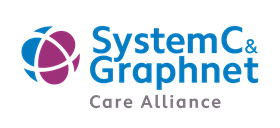Guy Lucchi, managing director of healthcare at System C, explains how trusts are rolling out their electronic prescribing systems in record time with immediate benefits to patient care
There are an estimated 237 million medication errors per year in the NHS England, costing at least £98m and contributing to the loss of more than 1,700 lives annually, according to a study published in BMJ Quality and Safety.
Sponsored by
I think that everyone reading this will agree that electronic prescribing is the way forward. It keeps patients safe. It frees up clinician time and saves money. Instead of puzzling over illegible notes, crucial information is available at the click of a button. When integrated into an electronic patient record, details such as drug schedules can move with the patient as they transition between departments.
Hospitals, trusts, and health boards are now fully behind going paperless. With that in mind, it’s time to look at how we can work harder and faster to implement electronic prescribing, enabling hospitals, and their staff to see the benefits sooner.
Detailed preparation and a finely tuned timeline
Several trusts have set the standard for implementing digital prescribing quickly, efficiently and with high staff engagement. Barnsley Hospital Foundation Trust is one of them.
Barnsley rolled-out System C’s CareFlow Medicines Management e-prescribing system across all adult inpatient areas in just 80 days last year, using lessons learned from more than 60 other sites. This included the Isle of Wight Trust, which took a similarly fast approach.
Much of Barnsley’s success was down to its preparation. Planning kicked off in October 2021 and progressed rapidly from there. In November, the digital team identified the trust’s super users, and enrolled them in “train the trainer” sessions, so they could confidently support implementation. This was followed by a two-day awareness raising session so staff could see the electronic prescribing and medicines administration with their own eyes and understand its benefits.
End user training started in January via e-learning. By February, the trust was ready for onsite support, so the digital teams started floor walking, enabling them to offer immediate help to users, if needed.
March 2022 saw the trust celebrating the launch of electronic prescribing. In the end, they went live with their first ward in a little over 70 days.
Faster is better
At Barnsley, there was a short two-ward pilot (two weeks) and then a compressed roll out across 20 wards (four weeks). The pilot highlighted things that could be improved and provided insights into how people used the system in the real world. It also demonstrated that the two-week period could have been even shorter. The system was embedded within three days.
When it came to the trust-wide roll-out, the plan was for three wards to go live per week until the end of March. There were no major issues, though Richard Billam, deputy director ICT at Barnsley, commented that the pharmacy team felt the brunt of the change when their existing paper processes came up against EPMA processes.
“We decided that we could either take that pain over a 10 or 12-week period, and slow down, or we could go faster and experience it in a short period, which is ultimately what we did.”
The importance of resources and support
Staff support, and resources were integral to the project’s success. As well as tapping into Barnsley’s clinical systems, EPMA pharmacy team, and digital nursing team, they also worked closely with local universities.
Medical and nursing students from the University of Sheffield and Sheffield Hallam were invited to join the deployment team for two days a week to offer support and floor walk during implementation.
The digital team also asked for support from other departments for help with transcriptions, an enormous piece of work. This resulted in support from medics and pharmacists, including those from Barnsley’s Acute Response Team and the Patient Safety Team.
Winning hearts and minds
It can be difficult to find an all-encompassing tool to communicate change. So, Barnsley adopted a proactive engagement approach instead.
Among other things, the digital team attended senior nursing forums, and governance meetings. They also met with every lead nurse and asked them to identify staff that could either provide training to others – or the ones that might need extra support themselves.
“When we talked to staff, we focused on what matters to them – their patients,” said Richard. “We all know that EPMA systems are safer. We emphasised that they wouldn’t need to chase paper charts around anymore. They’d be able to access it anytime and from anywhere.”
Lessons learned
Barnsley’s EPMA journey provided some valuable lessons:
- Build your own formulary. Barnsley took Glasgow’s but changed it to suit their needs.
- Don’t overthink training but do provide extensive floor walking support.
- Change for pharmacy processes is likely to be significant. Engage early.
- Don’t underestimate the length of time that transcription will take.
- Avoid extended pilots.
- Define your charts and build them early as part of end-to-end testing.
- Accept agility, run things in parallel, and don’t create dead-stop activities.
- Work with a supplier that you trust.
“If I had to single out one piece of advice, I would say focus on your deliverables,” shared Richard. “We knew that we were going to be live by the end of March, so every decision looped back to that one shining objective. Would an enhancement or other change help us achieve that goal? If not, then we would come back to it later. We were laser focused and it paid off.”
Find more details about how Barnsley rolled out its EPMA here.





























